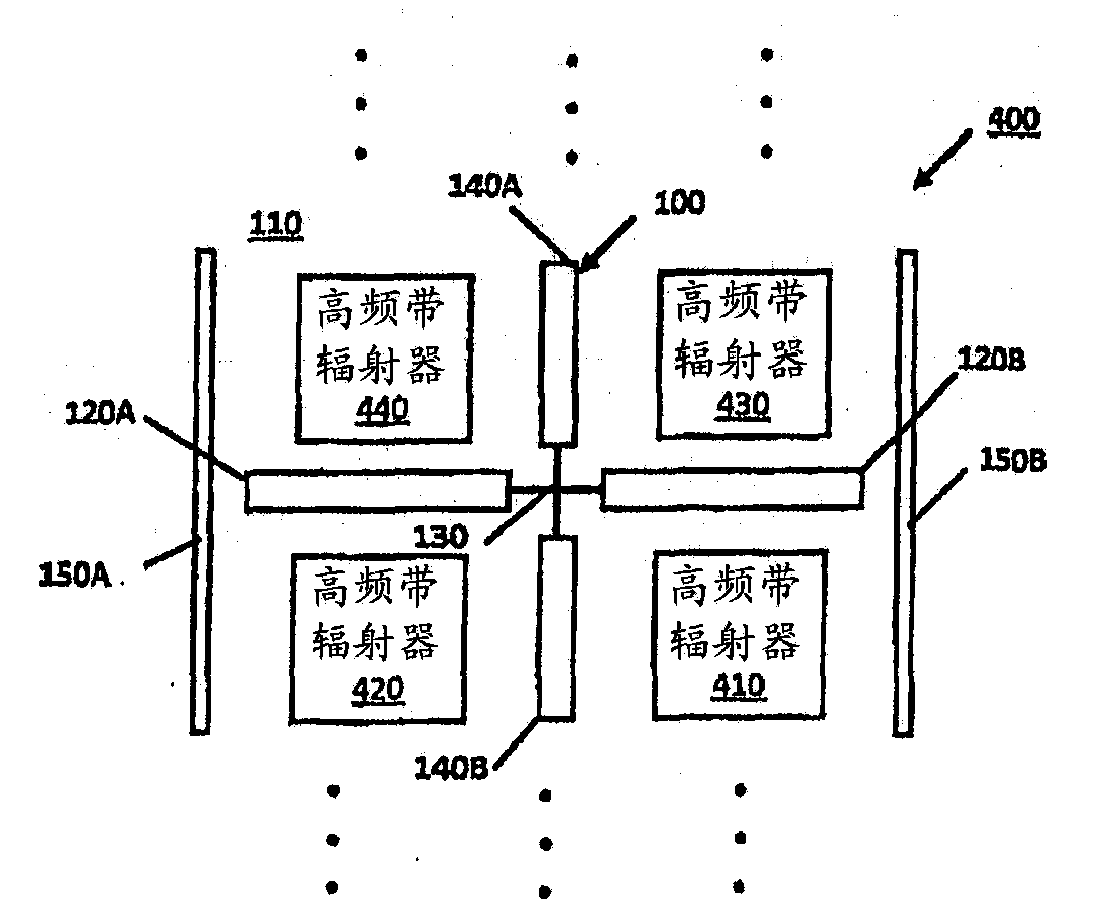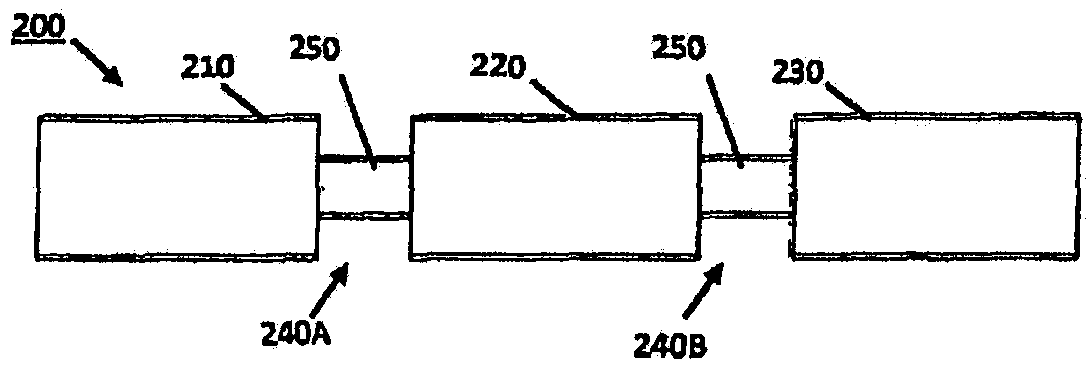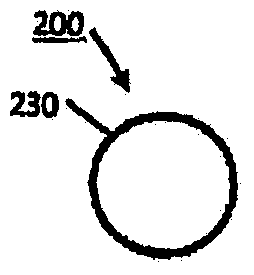Dual-band interspersed cellular basestation antennas
A technology for cellular base stations and antennas, applied in the directions of antennas, resonant antennas, antenna coupling, etc., can solve the problems of many antennas, difficulty in approving new locations, and visual pollution of antennas, and achieve the effect of optimizing size
- Summary
- Abstract
- Description
- Claims
- Application Information
AI Technical Summary
Problems solved by technology
Method used
Image
Examples
Embodiment Construction
[0030] In the following, low-band radiators for ultra-wideband dual-band dual-polarized cellular base station antennas and such dual-band cellular base station antennas are disclosed. In the following description, numerous specific details are set forth, including specific horizontal beamwidths, air interface standards, dipole arm shapes and materials, dielectric materials, and the like. However, those skilled in the art can understand from the present disclosure that modifications and / or substitutions can be proposed without departing from the scope and spirit of the present invention. In other instances, specific details may be omitted in order not to obscure the invention.
[0031] As used below, "low band" refers to a low frequency band, such as 698~960 MHz, and "high band" refers to a high frequency band, such as 1710 MHz~2690 MHz. A "low-band radiator" refers to a radiator for such a low-frequency band, and a "high-band radiator" refers to a radiator for such a high-fre...
PUM
 Login to View More
Login to View More Abstract
Description
Claims
Application Information
 Login to View More
Login to View More - R&D
- Intellectual Property
- Life Sciences
- Materials
- Tech Scout
- Unparalleled Data Quality
- Higher Quality Content
- 60% Fewer Hallucinations
Browse by: Latest US Patents, China's latest patents, Technical Efficacy Thesaurus, Application Domain, Technology Topic, Popular Technical Reports.
© 2025 PatSnap. All rights reserved.Legal|Privacy policy|Modern Slavery Act Transparency Statement|Sitemap|About US| Contact US: help@patsnap.com



